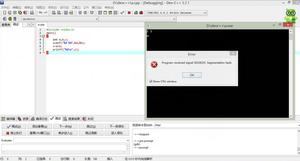Python3.0有什么新变化

- 作者
Guido van Rossum
This article explains the new features in Python 3.0, compared to 2.6.
Python 3.0, also known as "Python 3000" or "Py3K", is the first ever
intentionally backwards incompatible Python release. There are more
changes than in a typical release, and more that are important for all
Python users. Nevertheless, after digesting the changes, you'll find
that Python really hasn't changed all that much -- by and large, we're
mostly fixing well-known annoyances and warts, and removing a lot of
old cruft.
This article doesn't attempt to provide a complete specification of
all new features, but instead tries to give a convenient overview.
For full details, you should refer to the documentation for Python
3.0, and/or the many PEPs referenced in the text. If you want to
understand the complete implementation and design rationale for a
particular feature, PEPs usually have more details than the regular
documentation; but note that PEPs usually are not kept up-to-date once
a feature has been fully implemented.
Due to time constraints this document is not as complete as it should
have been. As always for a new release, the Misc/NEWS file in the
source distribution contains a wealth of detailed information about
every small thing that was changed.
常见的绊脚石¶
This section lists those few changes that are most likely to trip you
up if you're used to Python 2.5.
Print 是函数¶
The print statement has been replaced with a print()
function, with keyword arguments to replace most of the special syntax
of the old print statement (PEP 3105). Examples:
Old:print"The answer is",2*2New:print("The answer is",2*2)
Old:printx,# Trailing comma suppresses newline
New:print(x,end=" ")# Appends a space instead of a newline
Old:print# Prints a newline
New:print()# You must call the function!
Old:print>>sys.stderr,"fatal error"
New:print("fatal error",file=sys.stderr)
Old:print(x,y)# prints repr((x, y))
New:print((x,y))# Not the same as print(x, y)!
You can also customize the separator between items, e.g.:
print("There are <",2**32,"> possibilities!",sep="")which produces:
There are <4294967296> possibilities!注意
The
print()function doesn't support the "softspace" feature ofthe old
printstatement. For example, in Python 2.x,print"A\n","B"would write"A\nB\n"; but in Python 3.0,print("A\n","B")writes"A\nB\n".Initially, you'll be finding yourself typing the old
printxa lot in interactive mode. Time to retrain your fingers to type
print(x)instead!When using the
2to3source-to-source conversion tool, allprintstatements are automatically converted toprint()function calls, so this is mostly a non-issue forlarger projects.
Views And Iterators Instead Of Lists¶
Some well-known APIs no longer return lists:
dictmethodsdict.keys(),dict.items()anddict.values()return "views" instead of lists. For example,this no longer works:
k=d.keys();k.sort(). Usek=sorted(d) instead (this works in Python 2.5 too and is just
as efficient).
Also, the
dict.iterkeys(),dict.iteritems()anddict.itervalues()methods are no longer supported.map()andfilter()return iterators. If you really needa list and the input sequences are all of equal length, a quick
fix is to wrap
map()inlist(), e.g.list(map(...)),but a better fix is
often to use a list comprehension (especially when the original code
uses
lambda), or rewriting the code so it doesn't need alist at all. Particularly tricky is
map()invoked for theside effects of the function; the correct transformation is to use a
regular
forloop (since creating a list would just bewasteful).
If the input sequences are not of equal length,
map()willstop at the termination of the shortest of the sequences. For full
compatibility with
map()from Python 2.x, also wrap the sequences initertools.zip_longest(), e.g.map(func,*sequences)becomeslist(map(func,itertools.zip_longest(*sequences))).range()now behaves likexrange()used to behave, exceptit works with values of arbitrary size. The latter no longer
exists.
zip()now returns an iterator.
Ordering Comparisons¶
Python 3.0 has simplified the rules for ordering comparisons:
The ordering comparison operators (
<,<=,>=,>)raise a TypeError exception when the operands don't have a
meaningful natural ordering. Thus, expressions like
1<'',0>None or
len<=lenare no longer valid, and e.g.None<None raises
TypeErrorinstead of returningFalse. A corollary is that sorting a heterogeneous listno longer makes sense -- all the elements must be comparable to each
other. Note that this does not apply to the
==and!=operators: objects of different incomparable types always compare
unequal to each other.
builtin.sorted()andlist.sort()no longer accept thecmp argument providing a comparison function. Use the key
argument instead. N.B. the key and reverse arguments are now
"keyword-only".
The
cmp()function should be treated as gone, and the__cmp__()special method is no longer supported. Use
__lt__()for sorting,__eq__()with__hash__(), and other rich comparisons as needed.(If you really need the
cmp()functionality, you could use theexpression
(a>b)-(a<b)as the equivalent forcmp(a,b).)
整数¶
PEP 237: Essentially,
longrenamed toint.That is, there is only one built-in integral type, named
int; but it behaves mostly like the oldlongtype.PEP 238: An expression like
1/2returns a float. Use1//2to get the truncating behavior. (The latter syntax hasexisted for years, at least since Python 2.2.)
The
sys.maxintconstant was removed, since there is nolonger a limit to the value of integers. However,
sys.maxsizecan be used as an integer larger than any practical list or string
index. It conforms to the implementation's "natural" integer size
and is typically the same as
sys.maxintin previous releaseson the same platform (assuming the same build options).
The
repr()of a long integer doesn't include the trailingLanymore, so code that unconditionally strips that character will
chop off the last digit instead. (Use
str()instead.)Octal literals are no longer of the form
0720; use0o720instead.
Text Vs. Data Instead Of Unicode Vs. 8-bit¶
Everything you thought you knew about binary data and Unicode has
changed.
Python 3.0 uses the concepts of text and (binary) data instead
of Unicode strings and 8-bit strings. All text is Unicode; however
encoded Unicode is represented as binary data. The type used to
hold text is
str, the type used to hold data isbytes. The biggest difference with the 2.x situation isthat any attempt to mix text and data in Python 3.0 raises
TypeError, whereas if you were to mix Unicode and 8-bitstrings in Python 2.x, it would work if the 8-bit string happened to
contain only 7-bit (ASCII) bytes, but you would get
UnicodeDecodeErrorif it contained non-ASCII values. Thisvalue-specific behavior has caused numerous sad faces over the
years.
As a consequence of this change in philosophy, pretty much all code
that uses Unicode, encodings or binary data most likely has to
change. The change is for the better, as in the 2.x world there
were numerous bugs having to do with mixing encoded and unencoded
text. To be prepared in Python 2.x, start using
unicodefor all unencoded text, and
strfor binary or encoded dataonly. Then the
2to3tool will do most of the work for you.You can no longer use
u"..."literals for Unicode text.However, you must use
b"..."literals for binary data.As the
strandbytestypes cannot be mixed, youmust always explicitly convert between them. Use
str.encode()to go from
strtobytes, andbytes.decode()to go from
bytestostr. You can also usebytes(s,encoding=...)andstr(b,encoding=...),respectively.
Like
str, thebytestype is immutable. There is aseparate mutable type to hold buffered binary data,
bytearray. Nearly all APIs that acceptbytesalsoaccept
bytearray. The mutable API is based oncollections.MutableSequence.All backslashes in raw string literals are interpreted literally.
This means that
'\U'and'\u'escapes in raw strings are nottreated specially. For example,
r'\u20ac'is a string of 6characters in Python 3.0, whereas in 2.6,
ur'\u20ac'was thesingle "euro" character. (Of course, this change only affects raw
string literals; the euro character is
'\u20ac'in Python 3.0.)The built-in
basestringabstract type was removed. Usestrinstead. Thestrandbytestypesdon't have functionality enough in common to warrant a shared base
class. The
2to3tool (see below) replaces every occurrence ofbasestringwithstr.Files opened as text files (still the default mode for
open())always use an encoding to map between strings (in memory) and bytes
(on disk). Binary files (opened with a
bin the mode argument)always use bytes in memory. This means that if a file is opened
using an incorrect mode or encoding, I/O will likely fail loudly,
instead of silently producing incorrect data. It also means that
even Unix users will have to specify the correct mode (text or
binary) when opening a file. There is a platform-dependent default
encoding, which on Unixy platforms can be set with the
LANGenvironment variable (and sometimes also with some other
platform-specific locale-related environment variables). In many
cases, but not all, the system default is UTF-8; you should never
count on this default. Any application reading or writing more than
pure ASCII text should probably have a way to override the encoding.
There is no longer any need for using the encoding-aware streams
in the
codecsmodule.The initial values of
sys.stdin,sys.stdoutandsys.stderrare now unicode-only text files (i.e., they areinstances of
io.TextIOBase). To read and write bytes datawith these streams, you need to use their
io.TextIOBase.bufferattribute.
Filenames are passed to and returned from APIs as (Unicode) strings.
This can present platform-specific problems because on some
platforms filenames are arbitrary byte strings. (On the other hand,
on Windows filenames are natively stored as Unicode.) As a
work-around, most APIs (e.g.
open()and many functions in theosmodule) that take filenames acceptbytesobjectsas well as strings, and a few APIs have a way to ask for a
bytesreturn value. Thus,os.listdir()returns alist of
bytesinstances if the argument is abytesinstance, and
os.getcwdb()returns the current workingdirectory as a
bytesinstance. Note that whenos.listdir()returns a list of strings, filenames thatcannot be decoded properly are omitted rather than raising
UnicodeError.Some system APIs like
os.environandsys.argvcanalso present problems when the bytes made available by the system is
not interpretable using the default encoding. Setting the
LANGvariable and rerunning the program is probably the best approach.
PEP 3138: The
repr()of a string no longer escapesnon-ASCII characters. It still escapes control characters and code
points with non-printable status in the Unicode standard, however.
PEP 3120:现在默认的源码编码格式是UTF-8。
PEP 3131: Non-ASCII letters are now allowed in identifiers.
(However, the standard library remains ASCII-only with the exception
of contributor names in comments.)
The
StringIOandcStringIOmodules are gone. Instead,import the
iomodule and useio.StringIOorio.BytesIOfor text and data respectively.See also the Unicode 指南, which was updated for Python 3.0.
语法变化概述¶
This section gives a brief overview of every syntactic change in
Python 3.0.
新语法¶
PEP 3107: Function argument and return value annotations. This
provides a standardized way of annotating a function's parameters
and return value. There are no semantics attached to such
annotations except that they can be introspected at runtime using
the
__annotations__attribute. The intent is to encourageexperimentation through metaclasses, decorators or frameworks.
PEP 3102: Keyword-only arguments. Named parameters occurring
after
*argsin the parameter list must be specified usingkeyword syntax in the call. You can also use a bare
*in theparameter list to indicate that you don't accept a variable-length
argument list, but you do have keyword-only arguments.
Keyword arguments are allowed after the list of base classes in a
class definition. This is used by the new convention for specifying
a metaclass (see next section), but can be used for other purposes
as well, as long as the metaclass supports it.
PEP 3104:
nonlocalstatement. Usingnonlocalxyou can now assign directly to a variable in an outer (but
non-global) scope.
nonlocalis a new reserved word.PEP 3132: Extended Iterable Unpacking. You can now write things
like
a,b,*rest=some_sequence. And even*rest,a=stuff. The
restobject is always a (possibly empty) list; theright-hand side may be any iterable. Example:
(a,*rest,b)=range(5)
This sets a to
0, b to4, and rest to[1,2,3].Dictionary comprehensions:
{k:vfork,vinstuff}means thesame thing as
dict(stuff)but is more flexible. (This isPEP 274 vindicated. :-)
Set literals, e.g.
{1,2}. Note that{}is an emptydictionary; use
set()for an empty set. Set comprehensions arealso supported; e.g.,
{xforxinstuff}means the same thing asset(stuff)but is more flexible.New octal literals, e.g.
0o720(already in 2.6). The old octalliterals (
0720) are gone.New binary literals, e.g.
0b1010(already in 2.6), andthere is a new corresponding built-in function,
bin().Bytes literals are introduced with a leading
borB, andthere is a new corresponding built-in function,
bytes().
修改的语法¶
PEP 3109 and PEP 3134: new
raisestatement syntax:raise[expr[fromexpr]]. See below.asandwithare now reserved words. (Since2.6, actually.)
True,False, andNoneare reserved words. (2.6 partially enforcedthe restrictions on
Nonealready.)Change from
exceptexc, var toexceptexcasvar. See PEP 3110.PEP 3115: New Metaclass Syntax. Instead of:
classC:
__metaclass__=M
...
你现在需要使用:
classC(metaclass=M):
...
The module-global
__metaclass__variable is no longersupported. (It was a crutch to make it easier to default to
new-style classes without deriving every class from
object.)List comprehensions no longer support the syntactic form
[...forvarinitem1,item2,...]. Use[...forvarin(item1,item2,...)]instead.Also note that list comprehensions have different semantics: they
are closer to syntactic sugar for a generator expression inside a
list()constructor, and in particular the loop controlvariables are no longer leaked into the surrounding scope.
The ellipsis (
...) can be used as an atomic expressionanywhere. (Previously it was only allowed in slices.) Also, it
must now be spelled as
.... (Previously it could also bespelled as
..., by a mere accident of the grammar.)
移除的语法¶
PEP 3113: Tuple parameter unpacking removed. You can no longer
write
deffoo(a,(b,c)):....Use
deffoo(a,b_c):b,c=b_cinstead.Removed backticks (use
repr()instead).Removed
<>(use!=instead).Removed keyword:
exec()is no longer a keyword; it remains asa function. (Fortunately the function syntax was also accepted in
2.x.) Also note that
exec()no longer takes a stream argument;instead of
exec(f)you can useexec(f.read()).Integer literals no longer support a trailing
lorL.String literals no longer support a leading
uorU.The
frommoduleimport*syntax is onlyallowed at the module level, no longer inside functions.
The only acceptable syntax for relative imports is
from.[module]importname. All
importforms not starting with.areinterpreted as absolute imports. (PEP 328)
Classic classes are gone.
Changes Already Present In Python 2.6¶
Since many users presumably make the jump straight from Python 2.5 to
Python 3.0, this section reminds the reader of new features that were
originally designed for Python 3.0 but that were back-ported to Python
2.6. The corresponding sections in Python 2.6 有什么新变化 should be
consulted for longer descriptions.
PEP 343: "with" 语句. The
withstatement is now a standardfeature and no longer needs to be imported from the
__future__.Also check out Writing Context Managers and
contextlib 模块.
PEP 366: 从主模块显式相对导入. This enhances the usefulness of the
-moption when the referenced module lives in a package.
PEP 370: 分用户的 site-packages 目录.
PEP 371: 多任务处理包.
PEP 3101: 高级字符串格式. Note: the 2.6 description mentions the
format()method for both 8-bit and Unicode strings. In 3.0,only the
strtype (text strings with Unicode support)supports this method; the
bytestype does not. The plan isto eventually make this the only API for string formatting, and to
start deprecating the
%operator in Python 3.1.PEP 3105: print 改为函数. This is now a standard feature and no longer needs
to be imported from
__future__. More details were given above.PEP 3110: 异常处理的变更. The
exceptexcasvarsyntax is now standard and
exceptexc, var is nolonger supported. (Of course, the
asvar part is stilloptional.)
PEP 3112: 字节字面值. The
b"..."string literal notation (and itsvariants like
b'...',b"""...""", andbr"...") nowproduces a literal of type
bytes.PEP 3116: 新 I/O 库. The
iomodule is now the standard way ofdoing file I/O. The built-in
open()function is now analias for
io.open()and has additional keyword argumentsencoding, errors, newline and closefd. Also note that an
invalid mode argument now raises
ValueError, notIOError. The binary file object underlying a text fileobject can be accessed as
f.buffer(but beware that thetext object maintains a buffer of itself in order to speed up
the encoding and decoding operations).
PEP 3118: 修改缓冲区协议. The old builtin
buffer()is now really gone;the new builtin
memoryview()provides (mostly) similarfunctionality.
PEP 3119: 抽象基类. The
abcmodule and the ABCs defined in thecollectionsmodule plays a somewhat more prominent role inthe language now, and built-in collection types like
dictand
listconform to thecollections.MutableMappingand
collections.MutableSequenceABCs, respectively.PEP 3127: 整型文字支持和语法. As mentioned above, the new octal literal
notation is the only one supported, and binary literals have been
added.
PEP 3129: 类装饰器.
PEP 3141: A Type Hierarchy for Numbers. The
numbersmodule is another new use ofABCs, defining Python's "numeric tower". Also note the new
fractionsmodule which implementsnumbers.Rational.
Library Changes¶
Due to time constraints, this document does not exhaustively cover the
very extensive changes to the standard library. PEP 3108 is the
reference for the major changes to the library. Here's a capsule
review:
Many old modules were removed. Some, like
gopherlib(nolonger used) and
md5(replaced byhashlib), werealready deprecated by PEP 4. Others were removed as a result
of the removal of support for various platforms such as Irix, BeOS
and Mac OS 9 (see PEP 11). Some modules were also selected for
removal in Python 3.0 due to lack of use or because a better
replacement exists. See PEP 3108 for an exhaustive list.
The
bsddb3package was removed because its presence in thecore standard library has proved over time to be a particular burden
for the core developers due to testing instability and Berkeley DB's
release schedule. However, the package is alive and well,
externally maintained at https://www.jcea.es/programacion/pybsddb.htm.
Some modules were renamed because their old name disobeyed
PEP 8, or for various other reasons. Here's the list:
旧名称
新名称
_winreg
winreg
ConfigParser
configparser
copy_reg
copyreg
队列
queue
SocketServer
socketserver
markupbase
_markupbase
repr
reprlib
test.test_support
test.support
A common pattern in Python 2.x is to have one version of a module
implemented in pure Python, with an optional accelerated version
implemented as a C extension; for example,
pickleandcPickle. This places the burden of importing the acceleratedversion and falling back on the pure Python version on each user of
these modules. In Python 3.0, the accelerated versions are
considered implementation details of the pure Python versions.
Users should always import the standard version, which attempts to
import the accelerated version and falls back to the pure Python
version. The
pickle/cPicklepair received thistreatment. The
profilemodule is on the list for 3.1. TheStringIOmodule has been turned into a class in theiomodule.
Some related modules have been grouped into packages, and usually
the submodule names have been simplified. The resulting new
packages are:
dbm(anydbm,dbhash,dbm,dumbdbm,gdbm,whichdb).html(HTMLParser,htmlentitydefs).http(httplib,BaseHTTPServer,CGIHTTPServer,SimpleHTTPServer,Cookie,cookielib).tkinter(allTkinter-related modules exceptturtle). The target audience ofturtledoesn'treally care about
tkinter. Also note that as of Python2.6, the functionality of
turtlehas been greatly enhanced.urllib(urllib,urllib2,urlparse,robotparse).xmlrpc(xmlrpclib,DocXMLRPCServer,SimpleXMLRPCServer).
Some other changes to standard library modules, not covered by
PEP 3108:
Killed
sets. Use the built-inset()class.Cleanup of the
sysmodule: removedsys.exitfunc(),sys.exc_clear(),sys.exc_type,sys.exc_value,sys.exc_traceback. (Note thatsys.last_typeetc. remain.)
Cleanup of the
array.arraytype: theread()andwrite()methods are gone; usefromfile()andtofile()instead. Also, the'c'typecode for array isgone -- use either
'b'for bytes or'u'for Unicodecharacters.
Cleanup of the
operatormodule: removedsequenceIncludes()andisCallable().Cleanup of the
threadmodule:acquire_lock()andrelease_lock()are gone; useacquire()andrelease()instead.Cleanup of the
randommodule: removed thejumpahead()API.The
newmodule is gone.The functions
os.tmpnam(),os.tempnam()andos.tmpfile()have been removed in favor of thetempfilemodule.
The
tokenizemodule has been changed to work with bytes. Themain entry point is now
tokenize.tokenize(), instead ofgenerate_tokens.
string.lettersand its friends (string.lowercaseandstring.uppercase) are gone. Usestring.ascii_lettersetc. instead. (The reason for theremoval is that
string.lettersand friends hadlocale-specific behavior, which is a bad idea for such
attractively-named global "constants".)
Renamed module
__builtin__tobuiltins(removing theunderscores, adding an 's'). The
__builtins__variablefound in most global namespaces is unchanged. To modify a builtin,
you should use
builtins, not__builtins__!
PEP 3101: A New Approach To String Formatting¶
A new system for built-in string formatting operations replaces the
%string formatting operator. (However, the%operator isstill supported; it will be deprecated in Python 3.1 and removed
from the language at some later time.) Read PEP 3101 for the full
scoop.
Changes To Exceptions¶
The APIs for raising and catching exception have been cleaned up and
new powerful features added:
PEP 352: All exceptions must be derived (directly or indirectly)
from
BaseException. This is the root of the exceptionhierarchy. This is not new as a recommendation, but the
requirement to inherit from
BaseExceptionis new. (Python2.6 still allowed classic classes to be raised, and placed no
restriction on what you can catch.) As a consequence, string
exceptions are finally truly and utterly dead.
Almost all exceptions should actually derive from
Exception;BaseExceptionshould only be used as a base class forexceptions that should only be handled at the top level, such as
SystemExitorKeyboardInterrupt. The recommendedidiom for handling all exceptions except for this latter category is
to use
exceptException.StandardErrorwas removed.Exceptions no longer behave as sequences. Use the
argsattribute instead.
PEP 3109: Raising exceptions. You must now use
raiseException(args) instead of
raiseException,args.Additionally, you can no longer explicitly specify a traceback;
instead, if you have to do this, you can assign directly to the
__traceback__attribute (see below).PEP 3110: Catching exceptions. You must now use
exceptSomeExceptionasvariableinsteadof
exceptSomeException,variable. Moreover, thevariable is explicitly deleted when the
exceptblockis left.
PEP 3134: Exception chaining. There are two cases: implicit
chaining and explicit chaining. Implicit chaining happens when an
exception is raised in an
exceptorfinallyhandler block. This usually happens due to a bug in the handler
block; we call this a secondary exception. In this case, the
original exception (that was being handled) is saved as the
__context__attribute of the secondary exception.Explicit chaining is invoked with this syntax:
raiseSecondaryException()fromprimary_exception
(where primary_exception is any expression that produces an
exception object, probably an exception that was previously caught).
In this case, the primary exception is stored on the
__cause__attribute of the secondary exception. Thetraceback printed when an unhandled exception occurs walks the chain
of
__cause__and__context__attributes and prints aseparate traceback for each component of the chain, with the primary
exception at the top. (Java users may recognize this behavior.)
PEP 3134: Exception objects now store their traceback as the
__traceback__attribute. This means that an exceptionobject now contains all the information pertaining to an exception,
and there are fewer reasons to use
sys.exc_info()(though thelatter is not removed).
A few exception messages are improved when Windows fails to load an
extension module. For example,
errorcode193is now%1isnotavalidWin32application. Strings now deal with non-English
locales.
Miscellaneous Other Changes¶
Operators And Special Methods¶
!=now returns the opposite of==, unless==returnsNotImplemented.The concept of "unbound methods" has been removed from the language.
When referencing a method as a class attribute, you now get a plain
function object.
__getslice__(),__setslice__()and__delslice__()were killed. The syntax
a[i:j]now translates toa.__getitem__(slice(i,j))(or__setitem__()or__delitem__(), when used as an assignment or deletion target,respectively).
PEP 3114: the standard
next()method has been renamed to__next__().The
__oct__()and__hex__()special methods are removed--
oct()andhex()use__index__()now to convertthe argument to an integer.
Removed support for
__members__and__methods__.The function attributes named
func_Xhave been renamed touse the
__X__form, freeing up these names in the functionattribute namespace for user-defined attributes. To wit,
func_closure,func_code,func_defaults,func_dict,func_doc,func_globals,func_namewere renamed to__closure__,__code__,__defaults__,__dict__,__doc__,__globals__,__name__,respectively.
__nonzero__()is now__bool__().
Builtins¶
PEP 3135: New
super(). You can now invokesuper()without arguments and (assuming this is in a regular instance method
defined inside a
classstatement) the right class andinstance will automatically be chosen. With arguments, the behavior
of
super()is unchanged.PEP 3111:
raw_input()was renamed toinput(). Thatis, the new
input()function reads a line fromsys.stdinand returns it with the trailing newline stripped.It raises
EOFErrorif the input is terminated prematurely.To get the old behavior of
input(), useeval(input()).A new built-in function
next()was added to call the__next__()method on an object.The
round()function rounding strategy and return type havechanged. Exact halfway cases are now rounded to the nearest even
result instead of away from zero. (For example,
round(2.5)nowreturns
2rather than3.)round(x[,n])nowdelegates to
x.__round__([n])instead of always returning afloat. It generally returns an integer when called with a single
argument and a value of the same type as
xwhen called with twoarguments.
Moved
intern()tosys.intern().Removed:
apply(). Instead ofapply(f,args)usef(*args).Removed
callable(). Instead ofcallable(f)you can useisinstance(f,collections.Callable). Theoperator.isCallable()function is also gone.
Removed
coerce(). This function no longer serves a purposenow that classic classes are gone.
Removed
execfile(). Instead ofexecfile(fn)useexec(open(fn).read()).Removed the
filetype. Useopen(). There are now severaldifferent kinds of streams that open can return in the
iomodule.Removed
reduce(). Usefunctools.reduce()if you reallyneed it; however, 99 percent of the time an explicit
forloop is more readable.
Removed
reload(). Useimp.reload().Removed.
dict.has_key()-- use theinoperatorinstead.
构建和 C API 的改变¶
Due to time constraints, here is a very incomplete list of changes
to the C API.
Support for several platforms was dropped, including but not limited
to Mac OS 9, BeOS, RISCOS, Irix, and Tru64.
PEP 3118: New Buffer API.
PEP 3121: Extension Module Initialization & Finalization.
PEP 3123: Making
PyObject_HEADconform to standard C.No more C API support for restricted execution.
PyNumber_Coerce(),PyNumber_CoerceEx(),PyMember_Get(), andPyMember_Set()C APIs are removed.New C API
PyImport_ImportModuleNoBlock(), works likePyImport_ImportModule()but won't block on the import lock(returning an error instead).
Renamed the boolean conversion C-level slot and method:
nb_nonzerois nownb_bool.Removed
METH_OLDARGSandWITH_CYCLE_GCfrom the C API.
性能¶
The net result of the 3.0 generalizations is that Python 3.0 runs the
pystone benchmark around 10% slower than Python 2.5. Most likely the
biggest cause is the removal of special-casing for small integers.
There's room for improvement, but it will happen after 3.0 is
released!
移植 Python 3.0¶
For porting existing Python 2.5 or 2.6 source code to Python 3.0, the
best strategy is the following:
(Prerequisite:) Start with excellent test coverage.
Port to Python 2.6. This should be no more work than the average
port from Python 2.x to Python 2.(x+1). Make sure all your tests
pass.
(Still using 2.6:) Turn on the
-3command line switch.This enables warnings about features that will be removed (or
change) in 3.0. Run your test suite again, and fix code that you
get warnings about until there are no warnings left, and all your
tests still pass.
Run the
2to3source-to-source translator over your source codetree. (See 2to3 - 自动将 Python 2 代码转为 Python 3 代码 for more on this tool.) Run the
result of the translation under Python 3.0. Manually fix up any
remaining issues, fixing problems until all tests pass again.
It is not recommended to try to write source code that runs unchanged
under both Python 2.6 and 3.0; you'd have to use a very contorted
coding style, e.g. avoiding print statements, metaclasses,
and much more. If you are maintaining a library that needs to support
both Python 2.6 and Python 3.0, the best approach is to modify step 3
above by editing the 2.6 version of the source code and running the
2to3 translator again, rather than editing the 3.0 version of the
source code.
For porting C extensions to Python 3.0, please see 将扩展模块移植到 Python 3.








